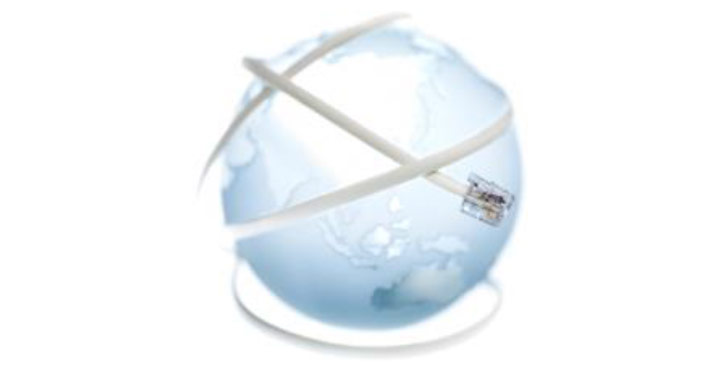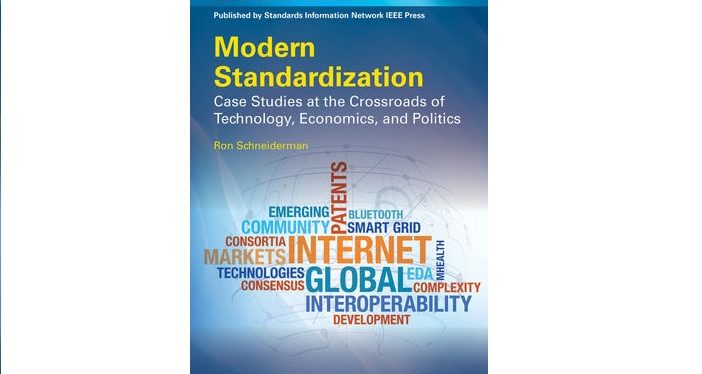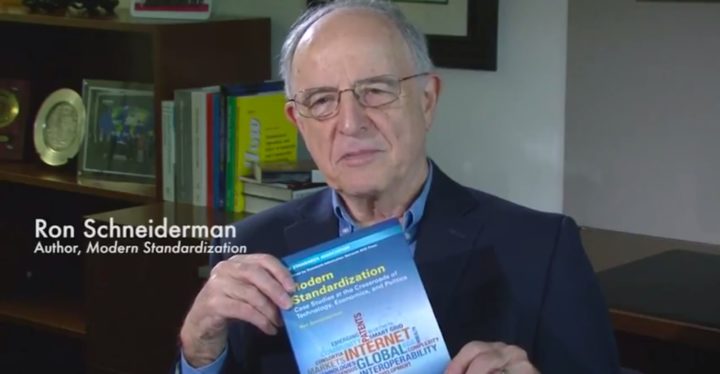Over recent years there has been a major worldwide push towards smart cities with many major world cities rolling out initiatives and new services aimed at improving cities and the lives of citizens. Partly driven by this rollout, international and national standards bodies have begun to identify and propose standards for activities and technologies associated with smart cities. However, because the breadth and range of activities under the smart city umbrella is so large–from smart city performance indicators to water pipes, from transportation to open data–the range and breadth of the standardization activities is equally as large and can be quite daunting. This short article aims to provide a high-level overview of some of the key standards groups and their smart city activities.
Categorizing Standardization Activities
The amount of activity in smart city standardization is truly broad and covers many areas. Some groups, such as IEEE, are looking at detailed technology aspects related to smart city networking or transportation while others, such as the International Organization for Standards (ISO), have a focus on higher-level activities such as strategies for smart city governance or procurement. A useful way to categorize these different types of standardization activities, and one promoted by the UK’s British Standards Institute (BSI), is to group them by level of abstraction into strategic, process, and technical. (See the BSI’s PD 8100 smart city overview for more details.)
- Level 1: Strategic. These are smart city standards that aim to provide guidance to city leadership and other bodies on the “process of developing a clear and effective overall smart city strategy.” They include guidance in identifying priorities, how to develop a roadmap for implementation, and how to effectively monitor and evaluate progress along the roadmap.
- Level 2: Process. Standards in this category are focused on procuring and managing smart city projects–particularly those that cross both organizations and sectors. Essentially these offer best practices and associated guidelines.
- Level 3: Technical. This level covers the myriad technical specifications that are needed to actually implement smart city products and services so that they meet the overall objectives
As the BSI states: “Strategic-level standards are of most relevance to city leadership and process-level standards to people in management posts. However, even technical specifications are relevant to people in management posts, as they need to know which standards they need to refer to when procuring technical products and services.” (From BSI PD 8100)
Using the Framework to Position and Group Standards Activities
Using this three-tier framework, it is possible to place many of the major international standards activities to better understand where their focus lies. The major international groups that have smart city activities include:
- ISO: International Organization for Standards is the main global body that national standards bodies work with and which many of us are familiar with via “ISO certified.” ISO has set up a strategy advisory group (SAG) for smart cities which is helping coordinate ISO activities and has been instrumental in helping in the formation of Technical Committee 268, which is developing standards across all three tiers.
- CEN/CENELEC/ETSI: In Europe, standards are developed and agreed to by the three officially recognized European standardization organizations: the European Committee for Standardization (CEN), the European Committee for Electrotechnical Standardization (CENELEC), and the European Telecommunications Standards Institute (ETSI). These groups have set up a coordination group focused on smart and sustainable cities and communities.
- ITU: The International Telegraph Union is the United Nations’ specialized agency for information and communication technologies– It created a focus group on smart sustainable cities (FG-SSC) that delivered a series of technical reports. A follow-on group, Study Group 20, is continuing that work.
- IEC: Founded in 1906, the IEC (International Electrotechnical Commission) is an established organization for the preparation and publication of international standards for all electrical, electronic, and related technologies, known collectively as “electrotechnology.” The IEC has a joint technical group with the ISO looking at smart cities, and its own system evaluation group on smart cities.
Fig. 1 places these groups graphically and identifies which subgroups are active in each of the three tiers.
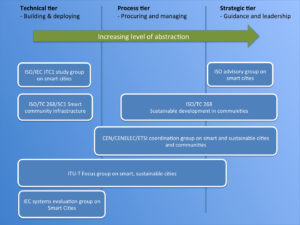
Fig. 1. International standards activities and their respective foci.
Looking at the output from some of these groups, we can now identify ongoing activities or standards and place them into the appropriate categories
STRATEGIC–Aimed at the Process of Developing a Clear and Effective Overall Smart City Strategy
- ISO 37120, Sustainable Development of Communities–Indicators for city services and quality of life. This standard, part of a suite by ISO’s Technical Committee 268 (TC 268), identifies 100 indicators that cities should track to allow them to benchmark progress. Actually, there are 17 areas, 46 core and 54 supporting indicators, that cities either “shall” (core) or “should” (supporting) track and report. The World Council on City Data has been set up by cities to benchmark cities, has certified 17 global cities, and is a good place to see this standard in use.
- Two draftISO standards, also from TC 268, but looking very much at management and strategy, are ISO 37101, Sustainable development and resilience of communities–Management systems–General principles and requirements; and ISO 37102, Sustainable development and resilience of communities– An overview of this ongoing project can be found on the ISO’s website.
- Although not an international organization, the BSI’s BS 8904 has a focus on sustainable communities and “provides a framework for recommendations and guidance that assist communities to improve. The recommendations and guidance are intended to be applied by communities of any size, structure, and type.”
PROCESS: Procuring and Managing Smart City Projects
- The development by the BIS of a smart city framework standard (PAS 181) falls into the process category. “It provides practical, “how-to” advice, reflecting current good practice as identified by a broad range of public, private, and voluntary sector practitioners engaged in facilitating UK smart cities.”
- Related to PAS 181 is the development of a data concept model for smart cities (PAS 182). This is an interesting activity, as a data model is critical for the development of smart city data hubs and data interoperability issues that are key components of any open data strategy.
TECHNICAL: Implementing Smart City Projects
- Two technical standards from the ISO/IEC JTC1 group that are still under development are: ISO/IEC AWI 30145, Information technology–Smart city ICT reference framework, and the associated ISO/IEC AWI 30146, Information technology–Smart city ICT indicators, which are both looking at the ICT infrastructure needed for smart cities.
- A useful overview of the technical activities of the ISO, IEC, and ITU can be found in a report from the ISO/IEC JTC1–Preliminary Report on Smart Cities. This document lays out the smart city space from a technical point of view with a good overview of the technical areas that the ISO, IEC, and ITU are working on, as well as details of their standards work and of the overall activities of JTC1.
IEEE Standards
IEEE has a wide variety of standards and ongoing activities that relate to key technical areas of the future smart city. Generally IEEE standards, due to their nature, fall under the category of technical standardization. One of the most critical is IEEE P2413, which is a developing standard for an architectural framework for the Internet of Things (IoT). The standard is being designed to offer a reference model defining relationships among various IoT verticals critical to smart cities, such as transportation and healthcare, and their common architectural elements.
In addition, IEEE has ongoing activities in areas such as:
Energy:
- IEEE 1547 series on handling distributed resources in electric power systems
- IEEE 1815 series on electric power systems communications
- IEEE 2030 series on the smart grid, including electric vehicle infrastructure
Smart Transportation:
- IEEE 1609 series on intelligent transportation
- IEEE Std 2030.1.1-2015 IEEE Standard Technical Specifications of a DC Quick Charger for Use with Electric Vehicles
- IEEE 2040 series on connected, automated, and intelligent vehicles (IEEE pre-standards activities)
IEEE also has ongoing activities in smart buildings, security, and communications that are all relevant to smart cities.
A more complete list of IEEE activities involving the smart city can be found in the regularly-updated report IEEE Standards Activities for Smart Cities. In addition, IEEE maintains a smart city community website to help coordinate member activities in the smart city area, which provides regular updates on activities and conferences related to smart cities.
Conclusion
The 21st century is one of rapid urbanization. Ensuring that the world’s cities offer citizens a rich and rewarding lifestyle requires that cities exploit technology to enrich people’s lives, deliver services, and ensure sustainable growth. The breadth and scope of this task touches on many areas, and requires a holistic approach that not only looks at core technical issues, but also needs to consider the management, process, and strategies associated with smart cities. As always, standards play a key role in facilitating the adoption of new technologies and are critical to the growth of smart cities worldwide.
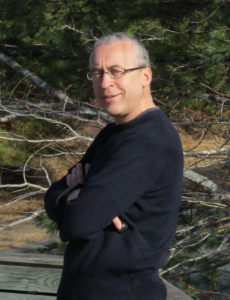 Rodger Lea
Rodger Lea
rodger.lea@gmail.com
@rodgerlea
Currently CEO of an Internet of Things (IoT) startup, Sense Tecnic Systems Inc., Dr. Lea has over 25 years of experience spanning academia, large corporations, and startups. For the last 10 years, he has started or helped start four new companies while managing an active research program (University of British Columbia, Canada, and Lancaster University, UK) into distributed and ubiquitous computing. Prior to his being involved with startups, Dr. Lea spent over 15 years in industrial research, most recently as Vice President and Director of Sony’s Distributed System Laboratory, located in Silicon Valley, CA.

